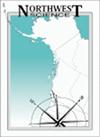Whitebark Pine in the National Parks of the Pacific States: An Assessment of Population Vulnerability
IF 0.5
4区 环境科学与生态学
Q4 ECOLOGY
引用次数: 3
Abstract
Abstract Whitebark pine (Pinus albicaulis) is a long-lived tree found in high-elevation forests of western North America that is declining due to the non-native white pine blister rust (Cronartium ribicola) and climate-driven outbreaks of mountain pine beetle (Dendroctonus ponderosae; MPB). The National Park Service established a monitoring program for whitebark pine in seven parks, including Sequoia & Kings Canyon, Yosemite, Lassen Volcanic, Crater Lake, Mount Rainier, Olympic, and North Cascades National Parks. Using these data, we summarized stand structure, presence of blister rust, and MPB prevalence to provide a baseline for future monitoring. Next, we used a stochastic, size-structured population model to speculate on future trends in the seven national park populations under conditions of increased MPB activity and ongoing blister rust infection observed in Crater Lake. We found that blister rust infected 29 to 54% of whitebark pine in all the parks except the two southernmost, Sequoia & Kings Canyon and Yosemite, where infections rates were 0.3% and 0.2%, respectively. The proportion of dead trees in Sequoia & Kings Canyon and Yosemite was low (0 to 1%), while they ranged from 10 to 43% in the other parks. Model projections suggested an average population decline of 25% in the parks over the next century using Crater Lake conditions, declines which are possible if blister rust continues to spread and climate change results in a significant increase in the frequency or severity of MPB outbreaks. Overall, our study describes conditions at seven western parks and illustrates potential rates of whitebark pine decline if pest outbreaks and/or blister rust infections worsen.太平洋国家公园中的白皮松:种群脆弱性评估
白皮松(Pinus albicaulis)是北美西部高海拔森林中发现的一种长寿树木,由于非本地白松水疱锈病(Cronartium ribicola)和气候驱动的山松甲虫(Dendroctonus ponderosae)的爆发,白皮松正在衰落。产甲烷)。国家公园管理局在七个公园建立了白皮松监测计划,包括红杉和国王峡谷、优胜美地、拉森火山、火山口湖、雷尼尔山、奥林匹克和北喀斯喀特国家公园。利用这些数据,我们总结了林分结构、水疱锈病的存在和MPB的流行情况,为未来的监测提供了基线。接下来,我们使用一个随机的、大小结构的种群模型来推测在火山口湖观察到的MPB活性增加和持续的水疱锈病感染的条件下,七个国家公园种群的未来趋势。我们发现水疱锈病感染了29 - 54%的白皮松,除了最南端的两个公园,红杉国王峡谷和约塞米蒂,感染率分别为0.3%和0.2%。红杉和国王峡谷和约塞米蒂的死树比例较低(0 - 1%),而其他公园的死树比例在10% - 43%之间。模型预测表明,在火山口湖的条件下,公园的平均种群数量在下个世纪下降25%,如果水疱锈病继续蔓延,气候变化导致MPB爆发的频率或严重程度显著增加,这种下降是可能的。总的来说,我们的研究描述了七个西部公园的情况,并说明了如果害虫爆发和/或水疱锈病感染恶化,白皮松的潜在下降率。
本文章由计算机程序翻译,如有差异,请以英文原文为准。
求助全文
约1分钟内获得全文
求助全文
来源期刊

Northwest Science
环境科学-生态学
CiteScore
1.30
自引率
0.00%
发文量
23
审稿时长
>36 weeks
期刊介绍:
The pages of Northwest Science are open to original and fundamental research in the basic, applied, and social sciences. All submissions are refereed by at least two qualified peer reviewers. Papers are welcome from authors outside of the Pacific Northwest if the topic is suitable to our regional audience.
 求助内容:
求助内容: 应助结果提醒方式:
应助结果提醒方式:


